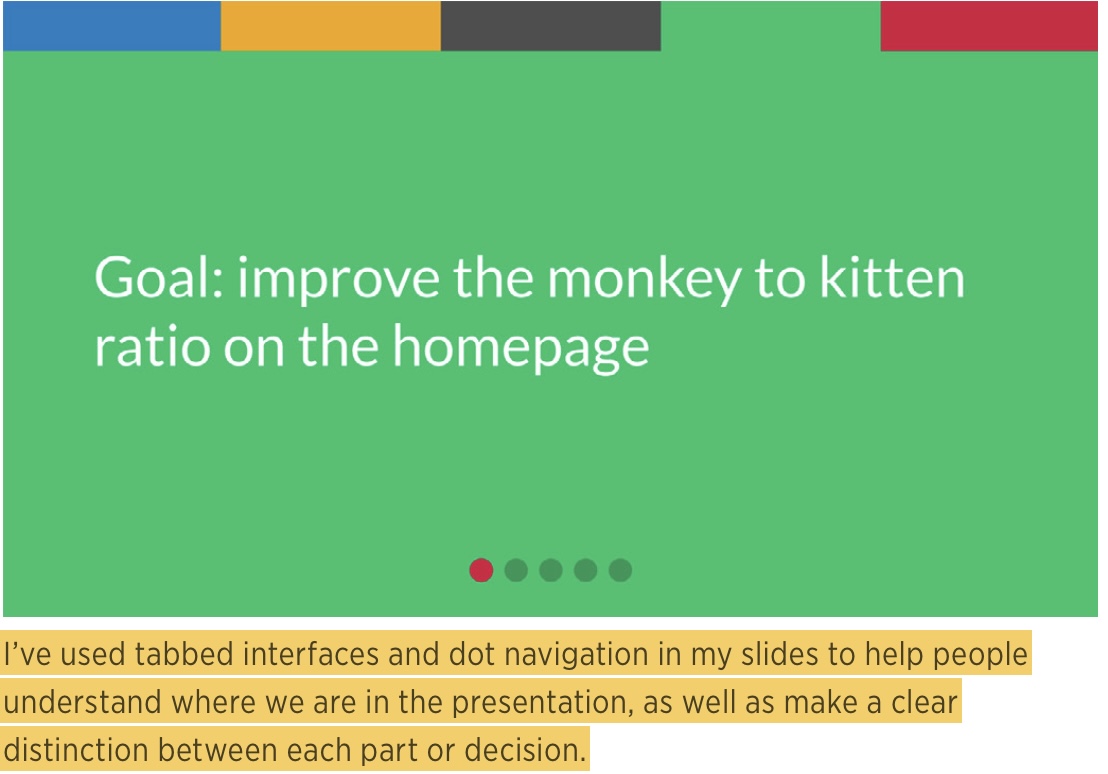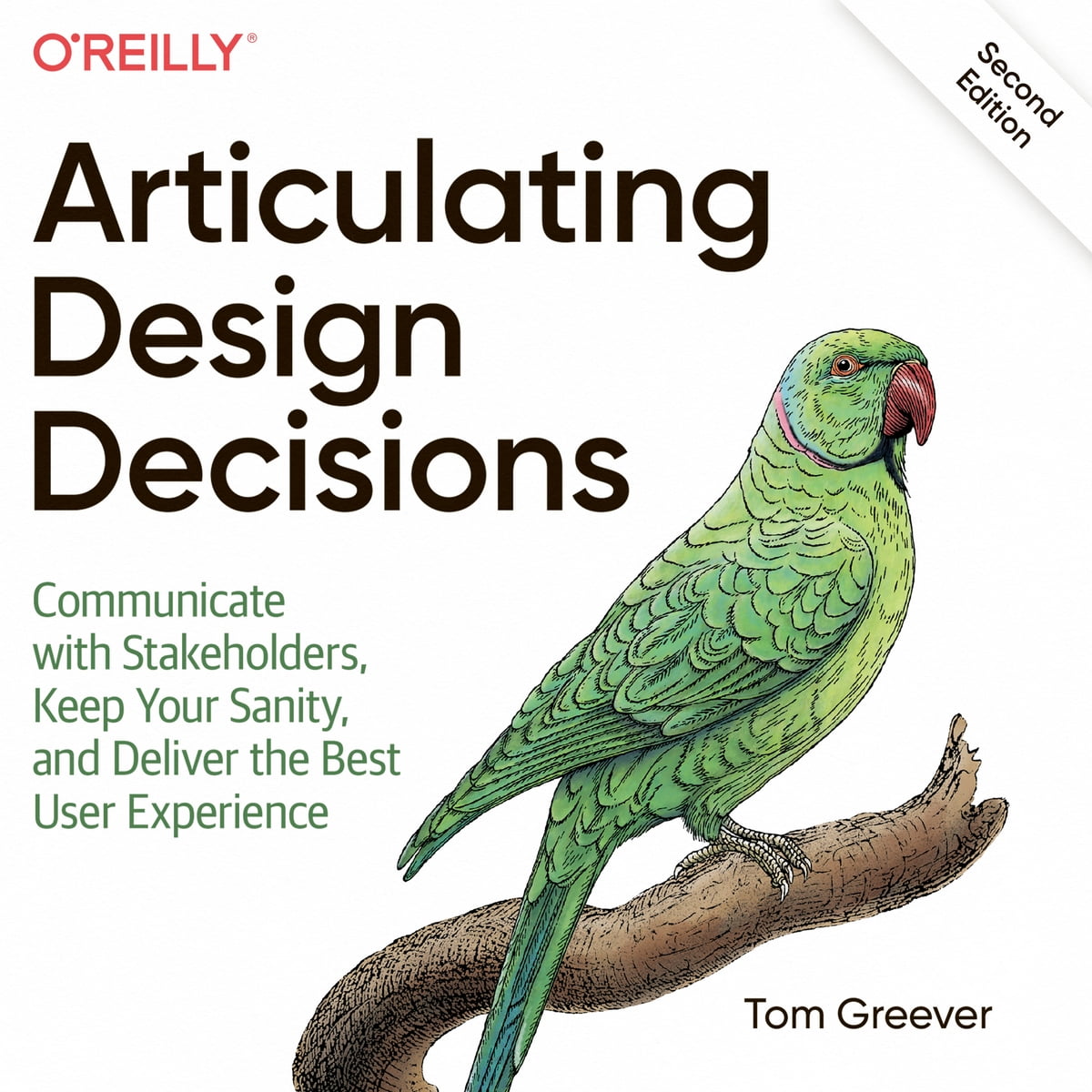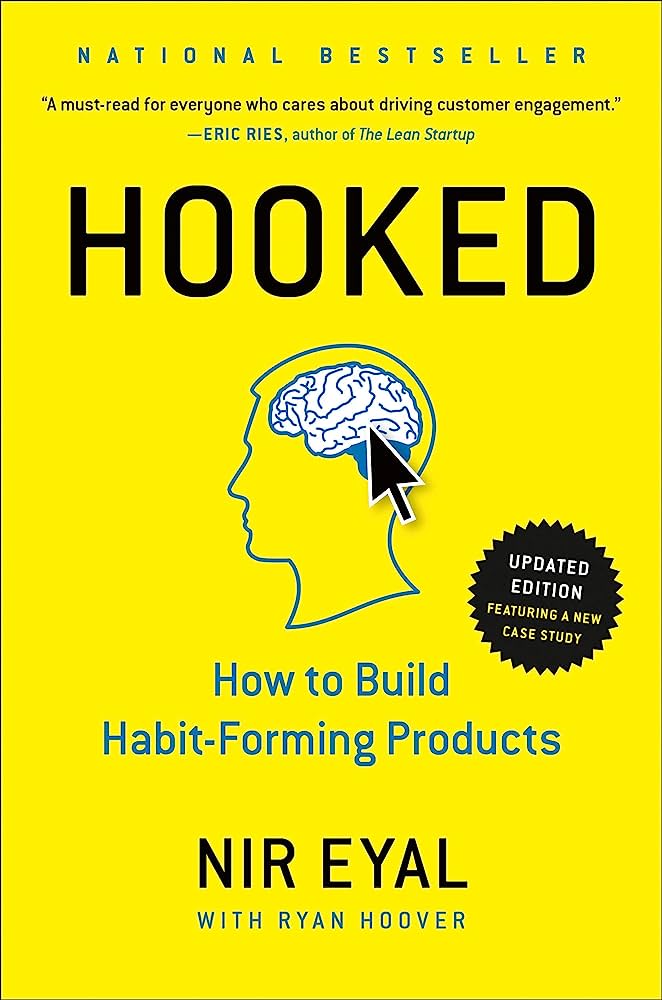How
1. When you find yourself comparing your designs with another popular platform ⇒ your decision is based on solving problem that other platform already addressed. But we need to analyse it by go through a new series of questions to get to the bottom of our thinking
🗒️ When you tap the button, it loads the next set of results the same way that SocialApp does ⇒ Why does SocialApp do it this way? Is our context similar enough? Does SocialApp have any data? Were they intentional about this choice?
Takeaway: the process of writing about what you create will help your brain to connect the dots between the problem you’re working on and how your designs solve it.
2. Designer is very good at coming up with a solution for the problem, but we are less adept at all solutions for that problem. This thinking always comes with a situation where we don’t prepare to deal with: when clients suggest an alternate idea that we haven’t considered.
🗒️ Be consciously aware of why your design decisions are better than the alternatives
3 questions we need to answer will form the basis of your response to every stakeholders concerns about your design
- What problem does it solve?
- How does it affect the user?
- Why is it better than the alternative?
Asking questions
Getting people to talk demonstrates that we need to be better at asking people questions about themselves so that they feel valued and are comfortable to talking to us.
Create common ground with stakeholders: Revealing some of my interests made it possible for us to establish some common ground
Being as direct as possible when trying to uncover people’s viewpoint and perspectives in situations where they can be difficult to read:
- What’s your opinion about this project?
- How does this project affect your job?
- What is your priority for this project?
⇒ give you insights that differ from company goals or project objectives.
Optimize meeting for memory
If your presentation is one long lecture, it’s difficult for people to pay attention. When you break up your content, you create more opportunities for people to remember

Hear what isn’t being said
You have to try to understand both what they’ve expressed out loud as well as what never came out of their mouth. They might have different motivation eventhough we share the same goals. Our mission here is to understand them and make sure we are in a common ground before talking further down to the solution.
Uncover the problem
Stakeholders often see a need that isn’t being met with our designs, and they may express it with a suggestion that isn’t the right solution ⇒ don’t focus on what they think needs to be changed or the specific words they use, instead focus on the underlying problem they’re trying to solve by suggesting that change
Eg. When someone says:
There are way too many colors here! It’s like a rainbow.
what they are actually expressing is:
The number of colors is distracting and I don’t know where to look or what’s important
We can help our stakeholders understand the real problem by asking questions andrepeating it back to them, or ask directly:
“What problem are you trying to solve by suggesting this?”
By digging deeper and understanding the real problem stakeholders trying to address, I was able to respond and address her concerns without changing the design at all.
💡 What are the advantages of doing it this way?
explaining why they think their suggestion is better without explicitly labeling one as better than the other.
💡 What do you suggest?
giving stakeholders an opportunity to propose something helps us understand their needs and gives them some context to realize the difficulty of the problem.
💡 How will this affect our goals?
just the process of answering this question helps them see why their suggestion won’t work as well as they thought.
💡 Where have you seen this before?
The point isn’t to suggest that their idea won’t work if it doesn’t exist already, but to find out if it’s rooted in a known design pattern from some other app or website.
Convert “likes” to “work”
We need to help our clients to move from talking about what they like and don’t like (which are their preferences) to what work and don’t work (which is the effectiveness of design).
Listen for opportunities to convert “likes” into “works.” Repeat back what they said by rephrasing the statement to focus on effectiveness. You might also consider following up with a question to confirm that’s what they intended to communicate or for additional clarification.
For example, “I understand that you want us to move that UI control over there, but why doesn’t it work to have it over here?” When people hear their concerns rephrased inside a frame of effectiveness, they often recognize that they’re only expressing a personal preference.
⇒ getting to the core issue and understanding how to respond to them more intelligently.
Get the right mindset
We think we’re there for feedback, when really we are there to facilitate a conversation about design. We are there to lead a discussion on solutions, not cram our work down everyone else’s throat. We have to take what we hear, analyze it, process it, and turn it into something more useful. We should expect to take what our stakeholders give us, and deliver it back to them better than it was before.
Part of our role is giving our stakeholders the tools and vocabulary they need to go represent our work to someone else. Because if we can give them the confidence to represent our work well—if they really understand our thinking enough to talk to someone else about it— then they’re likely to support us as a byproduct.


.png)
.png)